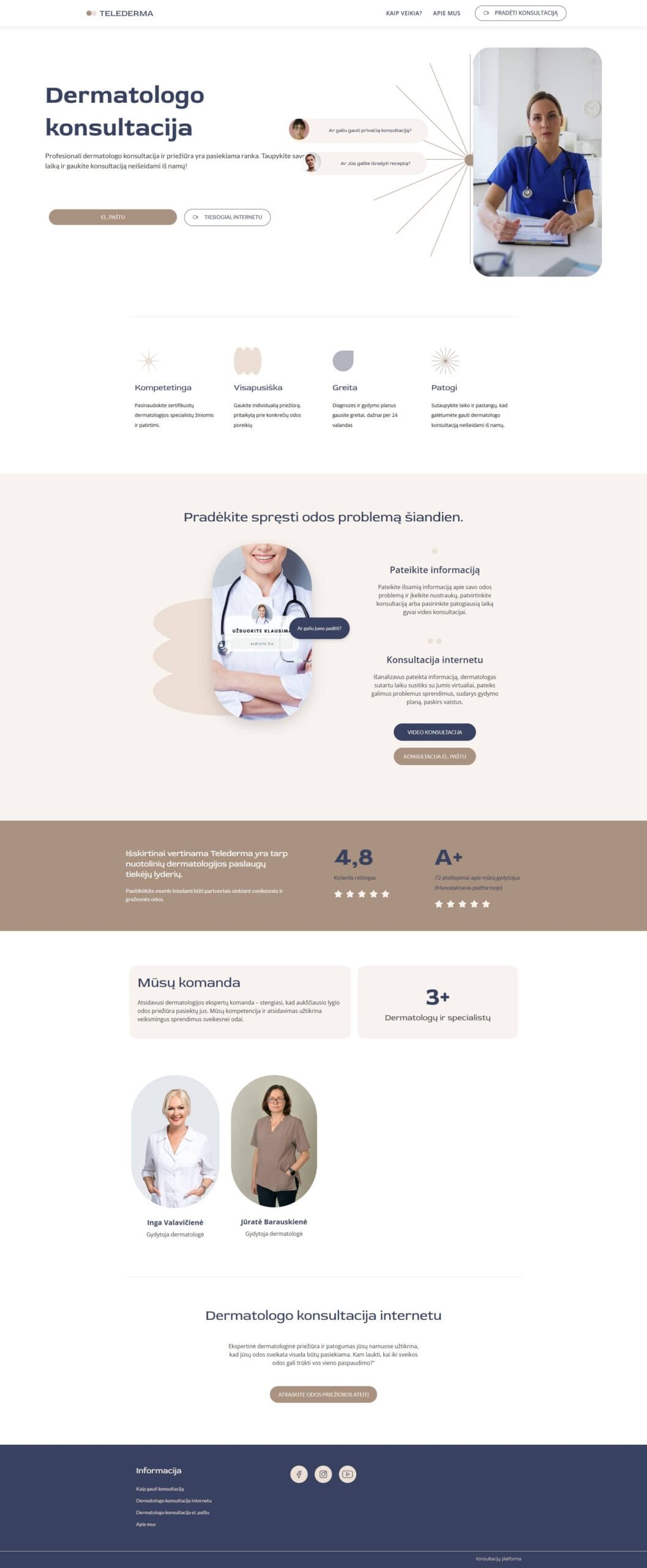Dermatology in 60 Seconds
Client needed easy teledermatology access
TeleDerma, a Lithuanian teledermatology provider, sought a user-friendly platform where patients—especially in remote areas—could upload skin photos, access dermatology advice, and receive follow-ups quickly, all from their phones or computers.

About Tele Dermatology
TeleDerma offers remote dermatological care across Lithuania, utilizing a store‑and‑forward model where patients submit images and receive professional evaluations. The service aims to reduce wait times, decrease travel needs, and streamline dermatology workflows for both patients and doctors.

The challenge
Patients faced challenges registering their conditions online: the old site’s form was long and unclear, image uploads were confusing, and completion rates were low. Many users dropped off mid-process.
Clinicians also lacked access to organized case dashboards and communication tools. The site had no accessibility features like alt attributes or keyboard navigation, making it hard for elderly users or those with disabilities. Additionally, performance was sluggish—forms took several seconds to load, increasing drop‑off risk.
Services Used:
STRENGTH IN NUMBERS
Business impact
We rebuilt TeleDerma’s site with WordPress and Elementor, designing a simplified, responsive flow that guides patients through image upload, symptom description, and submission in under 60 seconds on mobile.
Average consultation turnaround
Form completion rate
What We Did
We rebuilt TeleDerma’s site with WordPress and Elementor, designing a simplified, responsive flow that guides patients through image upload, symptom description, and submission in under 60 seconds on mobile.
Forms were broken into concise steps with clear progress indicators. We added image-preview functionality and real‑time validation to reduce abandonment. On the back end, clinicians received a secure case dashboard showing patient details and image histories for quick review.
We optimized performance using lazy loading, image compression, code minification, and caching—reducing form load times to under 2 seconds. The streamlined UI, combined with staff training, ensures quick site updates, new service launch flexibility, and hygiene compliance messaging without developer input.
- Simplified user flow
- Performance optimization
- Staff independence
